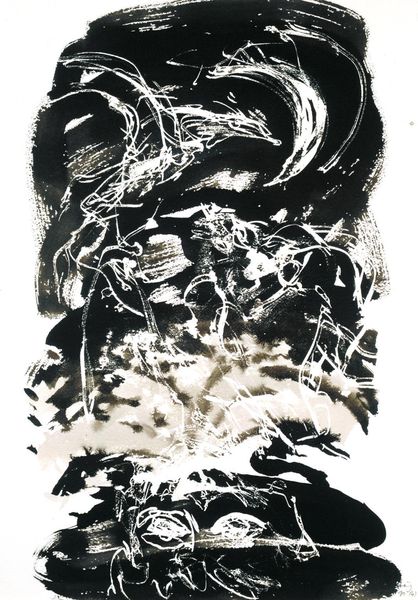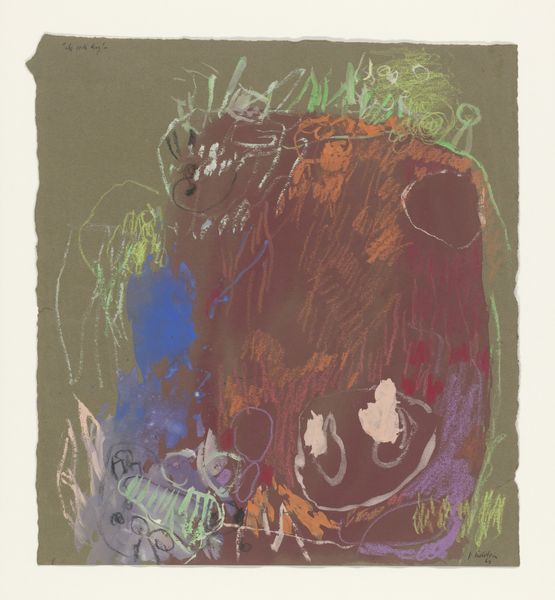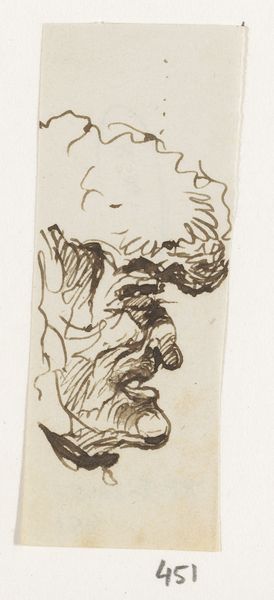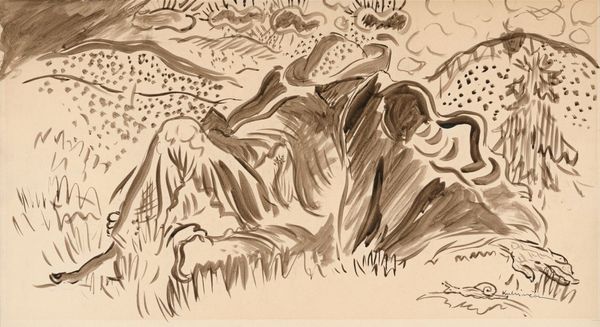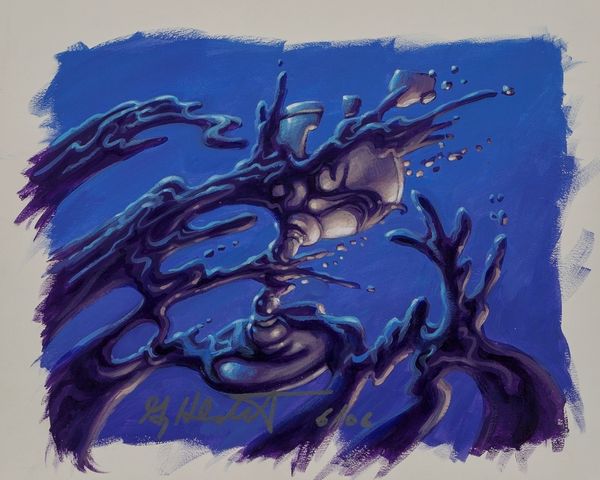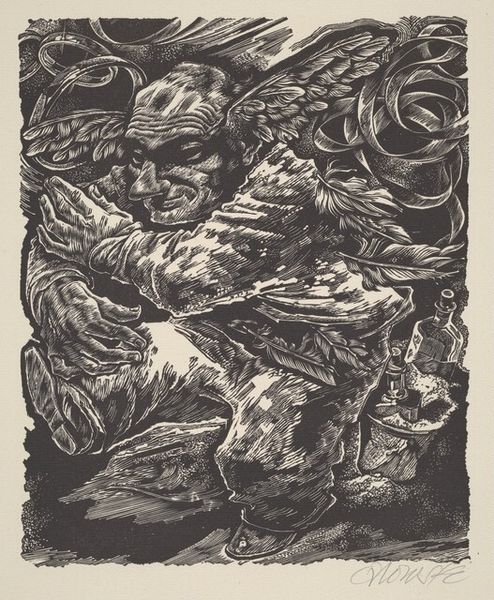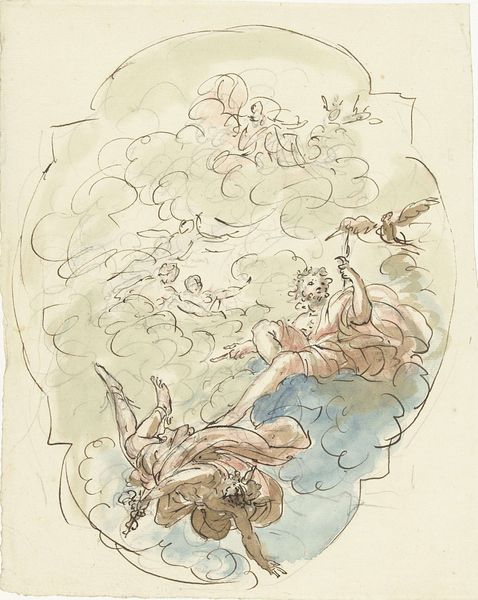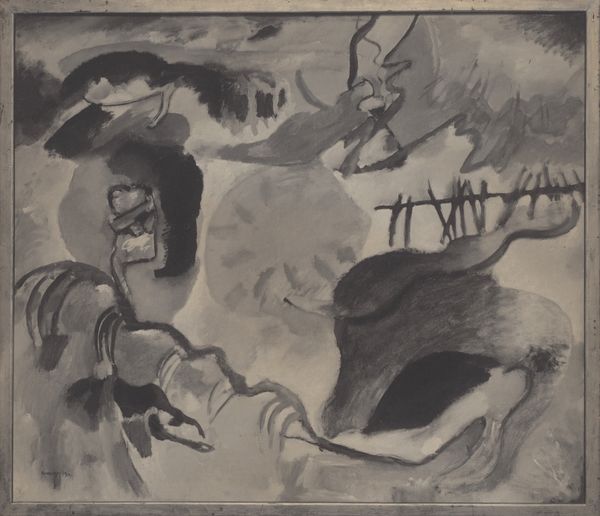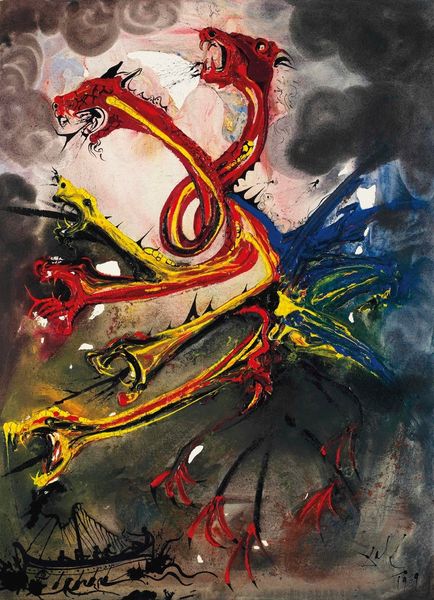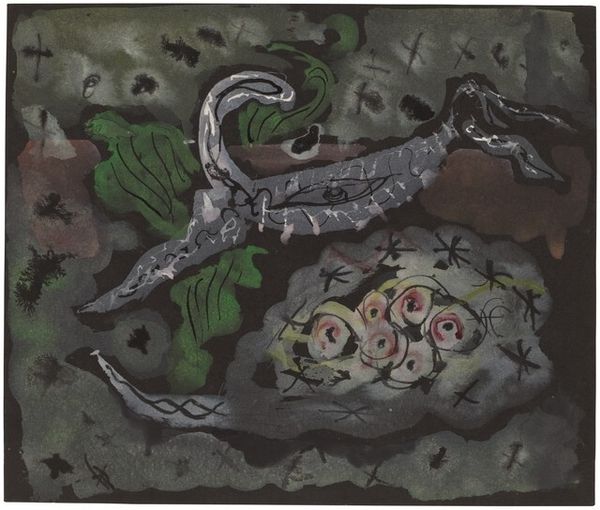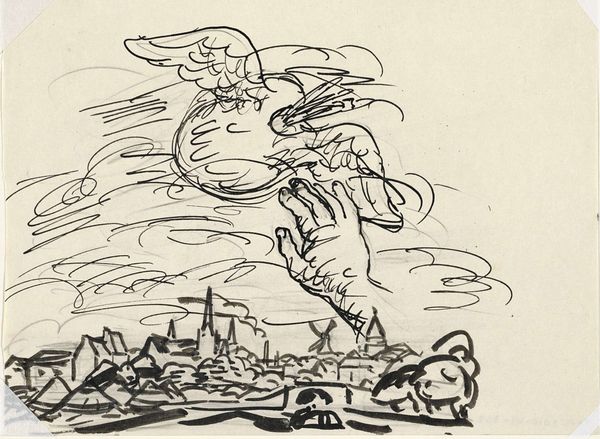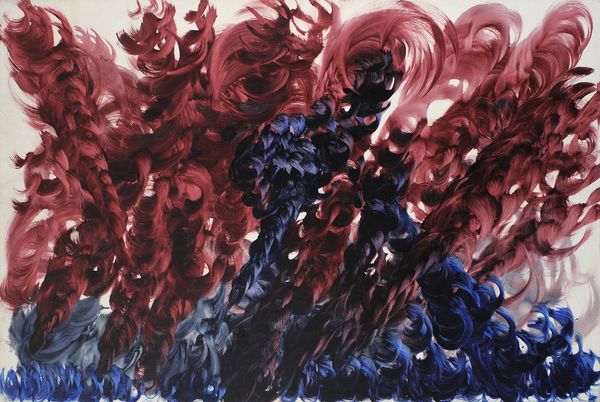
drawing, watercolor
#
drawing
#
narrative-art
#
german-expressionism
#
figuration
#
watercolor
#
expressionism
Dimensions: sheet: 22.9 x 27.9 cm (9 x 11 in.)
Copyright: National Gallery of Art: CC0 1.0
Curator: What a captivating scene. This is Wilhelm Morgner's watercolor drawing, "Hölzfäller (recto)," created in 1913. The title translates to "Woodcutter," but what's your initial response to this piece? Editor: My immediate impression is of raw, almost frantic energy. The vivid blues and reds, the frenzied lines...it feels like an outpouring of intense feeling, something untamed. Curator: Indeed. Morgner was a key figure in German Expressionism, a movement known for its emotional intensity and distorted forms. The early 20th century witnessed a surge of art that wasn't interested in naturalism, as much as it was focused on feeling, or evoking social changes by other means. Morgner shows his woodcutter mid-action: poised for labor with all the cultural baggage that would have suggested for an industrialized German audience. Editor: I find myself focusing on the figure's posture and clothing. That bright blue, applied so liberally, almost overwhelms the form, reducing him to his function as woodcutter. There's a flattening effect too – almost a reduction in depth from all of the bold mark making and thin washes. This also has implications, doesn’t it, given how materials could reflect specific social classes and/or ideologies at that time? Curator: Precisely. Watercolor was often associated with spontaneity or works for amateurs, yet Morgner elevates its expressiveness and allows the subject, too, to become just as important as its medium. The scene becomes about physical toil itself and this working body. The question is less “Who is he?" And more "what will he produce, who does he answer to?" Editor: So, the historical context is also crucial: considering Germany on the brink of World War I, with all the societal anxieties and upheavals bubbling under the surface? How do you see Morgner’s positioning of labor amidst those conditions? Curator: It speaks to the changing socio-political landscapes of that time: the rise of the working class, anxieties about modernization, the dehumanizing effects of industrial labor on German society... "Hölzfäller" perhaps then can serve as a kind of visual statement on humanity and production. Editor: An artistically charged take, I agree. This raw work opens multiple interpretative doors that are indicative of a transitional world, and one facing conflict. It's left me rethinking the role of these workers, even today.
Comments
No comments
Be the first to comment and join the conversation on the ultimate creative platform.
